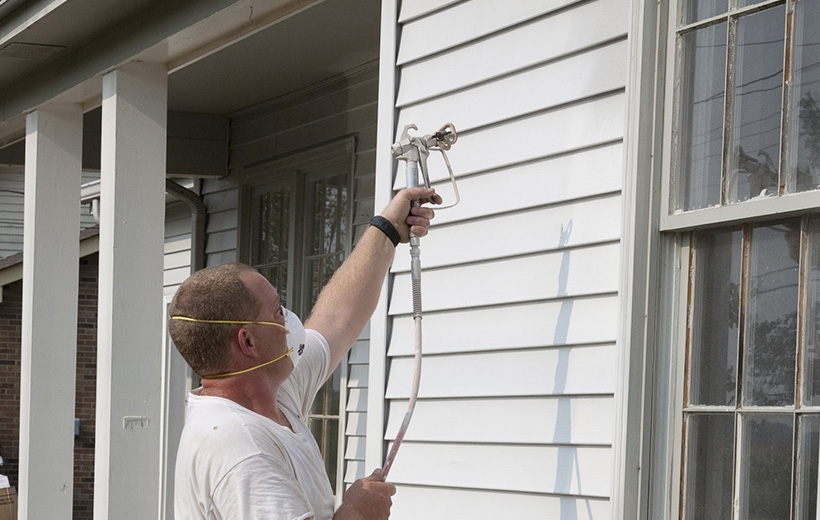Low-quality exterior paint can pose several risks, affecting both the aesthetic appeal and structural integrity of a building. From premature wear and tear to potential health hazards, using subpar paint can lead to various issues that homeowners, property managers, and contractors should be aware of. Let’s explore some detailed risks associated with low-quality exterior paint:
- Lack of Durability: One of the most apparent risks of using low-quality exterior paint is its lack of durability. Such paints often contain fewer binders and pigments, making them more prone to fading, chipping, and peeling. In harsh weather conditions, such as extreme heat, cold, or moisture, these paints may degrade rapidly, resulting in a shabby appearance and necessitating frequent repainting.
- Reduced Protection: Exterior paint serves as a protective barrier against various elements, including UV radiation, moisture, and pollutants. Low-quality paint formulations may offer inadequate protection, leading to structural damage over time. For instance, without proper UV protection, paint can degrade quickly, causing underlying materials like wood or metal to deteriorate, compromising the integrity of the building.
- Poor Adhesion: Low-quality paints often struggle to adhere properly to surfaces, resulting in uneven coverage and poor adhesion. This can lead to premature peeling and flaking, exposing the substrate to potential damage. Inadequate adhesion also makes it difficult for subsequent coats of paint to adhere properly, further exacerbating the problem and necessitating costly repairs.
- Prone to Cracking and Blistering: Inferior exterior paint formulations may lack the flexibility needed to withstand temperature fluctuations and substrate movement. As a result, the paint film may become brittle, leading to cracks and blisters over time. These defects not only detract from the appearance of the building but also compromise its waterproofing and insulation capabilities.
- Susceptibility to Mold and Mildew: Exterior surfaces exposed to moisture are vulnerable to mold and mildew growth, especially in humid climates. Low-quality paints may not contain adequate fungicides or mildewcides to inhibit the growth of these microorganisms. As a consequence, mold and mildew can proliferate beneath the paint film, causing unsightly stains, foul odors, and potential health hazards for occupants.
- Environmental Impact: Many low-quality paints contain higher levels of volatile organic compounds (VOCs), which are harmful chemicals that can contribute to indoor and outdoor air pollution. VOCs evaporate into the atmosphere during painting and drying, posing health risks to both humans and the environment. Additionally, the production and disposal of low-quality paints may generate more waste and consume more resources compared to higher-quality, longer-lasting alternatives.
- Health Concerns: In addition to VOCs, low-quality paints may contain other hazardous substances, such as lead and formaldehyde, which can pose serious health risks, particularly to children, pregnant women, and individuals with respiratory conditions. Exposure to these toxins through inhalation or skin contact can result in a range of adverse health effects, including respiratory irritation, neurological damage, and developmental disorders.
The risks associated with low-quality exterior paint encompass both aesthetic and functional considerations, as well as potential health and environmental hazards. To mitigate these risks and ensure long-lasting protection and beauty for exterior surfaces, it is essential to invest in high-quality paint products, properly prepare the substrate, and follow recommended application techniques. By prioritizing quality and durability, property owners can safeguard their investments and promote healthier, more sustainable living environments.



